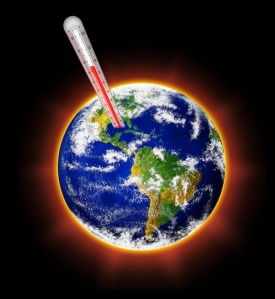I recently applied for a Calgary-based editor position, at which time the company requested I provide a short story about one of my favourite memories/experiences that took place in Calgary. Immediately my thoughts wandered to my first year of college.
While you may not connect with all of the specifics of this story, I anticipate that if you’ve ever left home for anything–school, travel, work–you will relate to the notion of discovery. Enjoy.
2001
It was where the QE2 transitions to Deerfoot Trail that I recall physically losing my breath as I observed the rows and rows of houses sprawled across the northern hills of Calgary. I was 17 and relocating to Calgary to start my post-secondary education at the Alberta College of Art & Design (ACAD). Change is difficult, and I was transitioning from living in a small Saskatchewan town of 3,000 people to a city of over 1,000,000. While my mom drove us south on Deerfoot Trail, talking optimistically about this new chapter in my life, 17-year-old me was doing my best to ignore the feeling that I might be swallowed whole by the big city.
My mom introduced me to my new apartment. It was located on the 9th floor of a building at the corner of 9th Avenue and 7th Street SW. Somewhere between breathlessness—as if I’d been punched in the stomach—and unpacking my mismatched set of dishes, excitement began to build. Anxiousness was replaced with anticipation, and the need for assurance morphed into the need for adventure. The C-train line was just out the building’s front door, and it was my gateway to discover the rest of the city.
Between my home and ACAD was Kensington. Naturally, this was one of the first communities that I explored. The Sunnyside Safeway taught me the important skill of budgeting. Higher Ground introduced me to the decadent world of Rolo lattes. Roasted veggie and feta melts from Heartland Cafe will forever remind me of the best part of discovering the big city—quaint, independently owned places existed that provided the familial feeling of a small town despite being in the midst of Calgary’s chaos.
A portion of our curriculum as first year students at ACAD was to visit several galleries, including the Glenbow, TRUCK Contemporary Art, Paul Kuhn, Stride, and The New Galleries. As an ACAD student, I was often able to attend openings and shows free of charge, which was amazing! I had the pleasure of interacting with performance art, ceramics, blown glass, photography, paintings and drawings from local and world-renowned artists, which included several of my own professors.

Kensington Road & 10th Street B. Weston, 2001
I was also required to submit hundreds of “drawing from life” sketches. The need to produce this much work forced me to find new and interesting venues for sketching. Places like Devonian Gardens and The Calgary Zoo were excellent locations to hone my skills. My sketchbook accompanied me everywhere. The inevitable result was that there was no place that was safe from me and my pencil. While it’s not uncommon to see an artist sketching in an art gallery or even a coffee shop, I suspect there may have been a few curious glances when I pulled out an enormous pad of sketch paper and began to draw my date at Vicious Circle.
This immersion in art altered how I looked at and interpreted information. People became lines and shadows and reflectors of light, the relationship between objects became observations of positive and negative spaces, and sunsets became brush strokes. To this day, I see situations and moments as compositions and elements of a grander art piece. The lens through which I see my surroundings has been transformed forever.
Looking back, I didn’t fully appreciate the opportunities ACAD afforded me. Many individuals pursuing post-secondary education do so from dimly lit offices and library cubicles. While I certainly did do some of that, I was encouraged to actively engage in the best Calgary has to offer. Such participation during that formative age leaves me with gratitude, because the curiosity that welcomed adventure inside of 17-year-old me increased, awakening parts of myself I hadn’t encountered yet.










 Yet again, my mom (and dad) made an incredibly difficult decision for the betterment of my brother and I. For 15 years, she intertwined her life with ours, making herself physically present as well as emotionally and mentally available. For 15 years, she kept the home afloat while my dad worked incredibly long, hard hours. For 15 years, we were her priority. And even when she knew that us leaving meant tearing away much of her purpose, she did it anyway. She chose us over her.
Yet again, my mom (and dad) made an incredibly difficult decision for the betterment of my brother and I. For 15 years, she intertwined her life with ours, making herself physically present as well as emotionally and mentally available. For 15 years, she kept the home afloat while my dad worked incredibly long, hard hours. For 15 years, we were her priority. And even when she knew that us leaving meant tearing away much of her purpose, she did it anyway. She chose us over her. oud of her desire to grow and not be stagnant. I am proud of her for
oud of her desire to grow and not be stagnant. I am proud of her for








